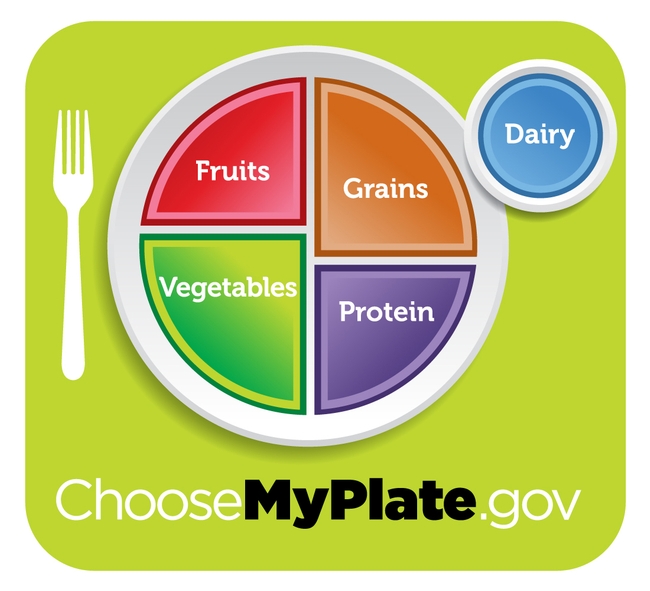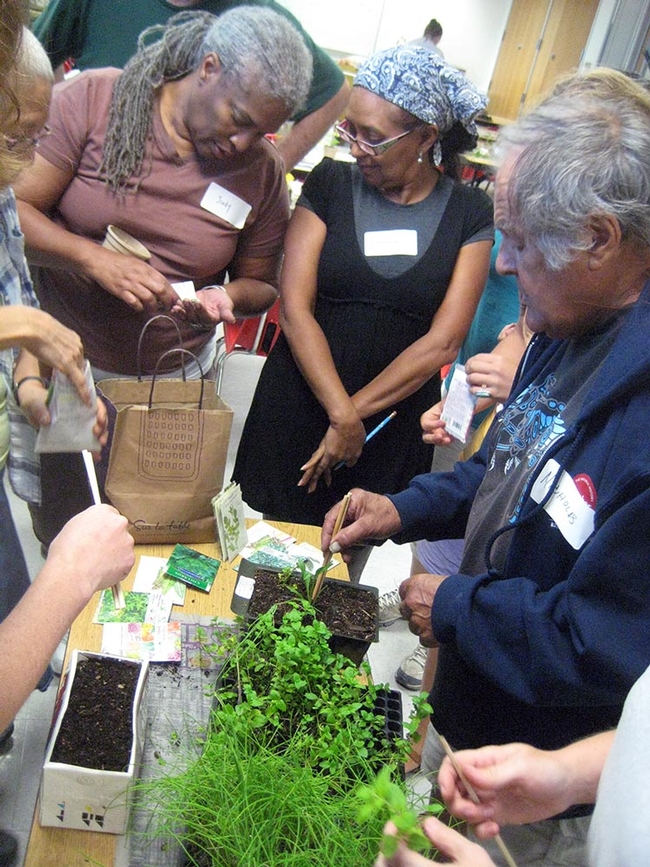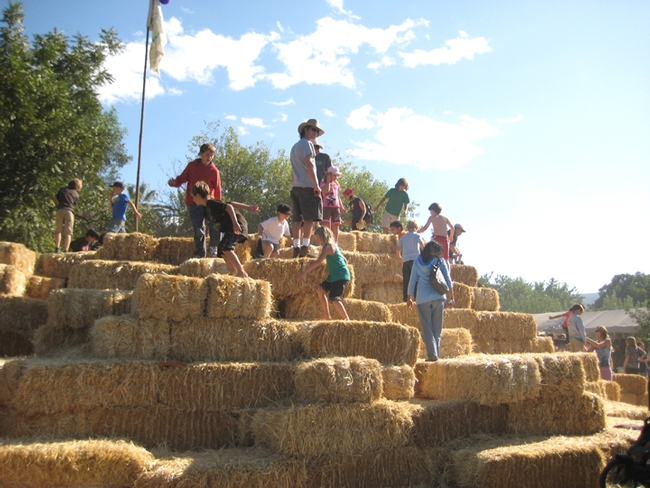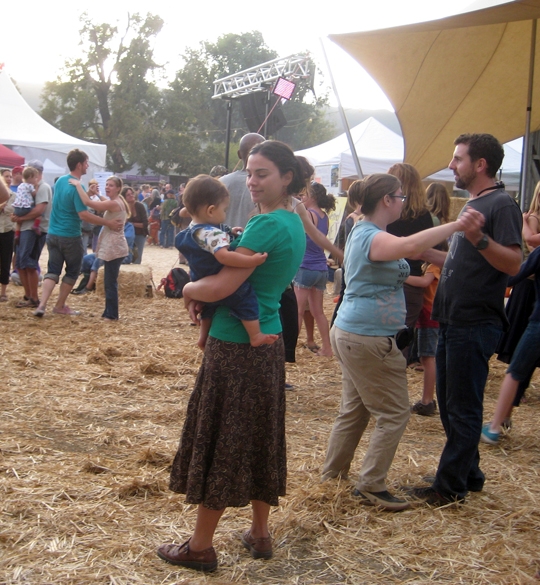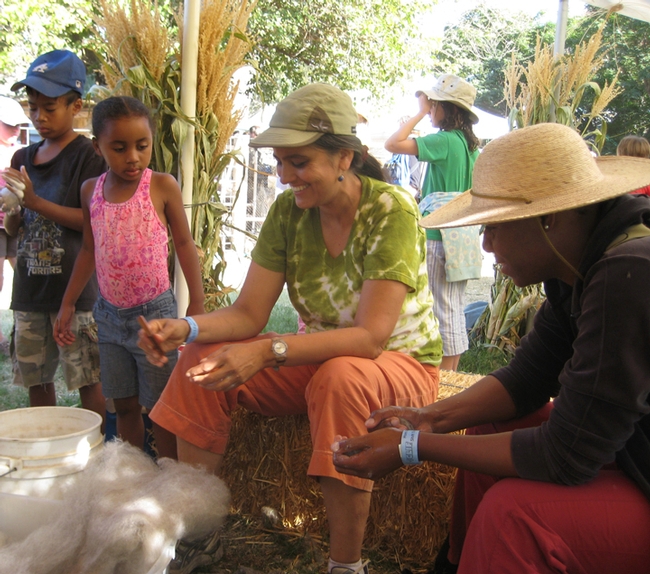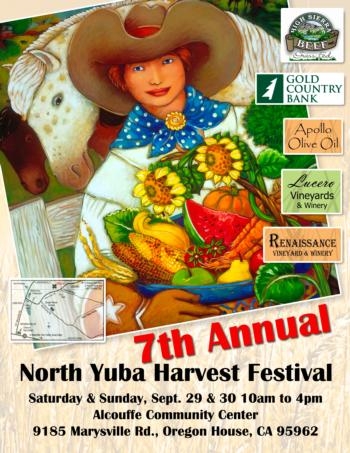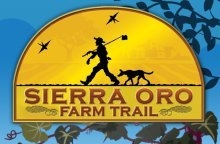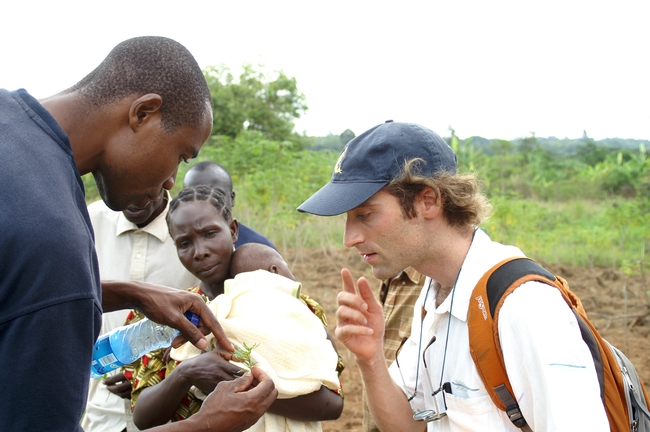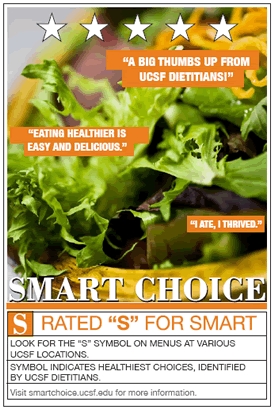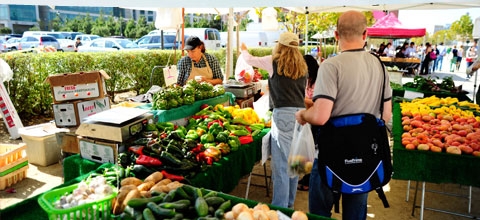UC Food Blog
Healthy classrooms
Remember when you were a kid and it was Tommy’s birthday and his mom brought those delicious cupcakes with the mounds of frosting to school? Picture with me all that syrupy sweet frosting in dazzling colors piled to the sky on top of a fluffy cupcake. While we are visualizing cupcakes, let’s do some cupcake math. If a teacher celebrates 30 students’ birthdays during the year, or about one per week in a nine-month school year, in addition to holidays like Halloween, Christmas, Valentines, and St. Patrick’s day, that can add up to a lot of sugary treats.
MyPlate teaches moderation, so there is nothing wrong with a sweet treat every now and again. However, there are many ways to have enjoyable classroom celebrations without so many sweets. Here are a few suggestions to make your classroom, or even your workplace, a healthier environment:
Holidays –
- Provide guidelines for parents about approved foods to bring. A short list with classroom policies and healthy examples can make a big difference in the types of foods that enter the classroom.
- Make foods look fun and festive, by adding seeds or nuts and making fun shapes with fruits and vegetables.
- Give alternative treats like bracelets, rings, crossword puzzles, maze games or yo-yo’s.
- For Halloween, celebrate with fun crafts instead of bags of candy; have students make masks and act out spooky plays.
- For Valentine’s Day have students write out nice comments about each classmate and pass them out during class. Instead of candy, consider treats like pencils, erasers and stickers.
Birthdays –
- Plan special games and activities, instead of food. Obstacle courses and relay races are a hit with all grade levels.
- Hand out low-cost treats like stickers, pencils, erasers, or other small items.
- Make a “VIP Birthday Kit” for the class with a birthday button, badge or crown.
- Allow birthday students to bring their favorite thing from home to show and tell.
- Let the birthday child be first in line for lunch or recess on his/her special day.
- Celebrate all the birthdays of the month on one day, and limit the food items to fruits, veggies and small cupcakes. Cutting cupcakes in half is a great way to reduce sugar and fat intake while enjoying treats in moderation.
Class rewards –
- Award with fun activities such as art, music and cooking demonstrations.
- Have the class earn special rewards: “Game Time” – children earn letters to spell “game time” and earn reading/story time, the chance to play educational board games or extra recess time.
- Lessons outside.
- Dancing to music in class or listening while working.
- Earn “Friday Free Time” or extended recess time.
- A smoothie party.
- A special field trip.
With the holiday season fast approaching, it’s never too early to transition students and parents to a healthy classroom environment. Remember, these tips are great for the classroom but also useful for work celebrations! For more information visit: www.choosemyplate.gov.
Tips adapted, in part, from the Network for a Healthy California Children’s PowerPlay! campaign.
Resources for beginning vegetable gardeners develop from LA initiative
Home vegetable gardening has always been popular in Los Angeles County. At the UC Cooperative Extension office in Los Angeles, we have a long history of teaching people how to garden through our Common Ground Garden Program. We began to get even more inquiries than usual from beginning gardeners starting three or four years ago. As it turned out, this was part of a larger trend. A national survey showed a 19 percent increase in edible gardening in U.S. households in just one year, between 2008 and 2009. We were excited about this new enthusiasm for home food production. However, based on experience at the community level, we were aware that new gardeners often floundered and might not continue gardening without support and a taste of success.
To address this growing audience of beginning vegetable gardeners, we developed a four-session workshop series, led by seasoned Master Gardener volunteers, to help new gardeners gain the fundamental skills needed to become successful. We call this the Grow LA Victory Garden Initiative. Training groups are kept small, 10 to 15 people, and are largely hands-on. New gardeners learn to prepare soil, plant seeds and transplant seedlings, water effectively and control pests. After training, the new gardeners continue to meet with their group leader informally, encouraging one another and sharing gardening tips.
This initiative has been popular and successful. Since we kicked off “Grow LA” in spring, 2010, we have trained 1,130 beginning gardeners at more than 40 sites around the county, including community gardens, parks, churches, libraries, schools and museums.
One outcome of this project has been the development of a manual for participants, the Vegetable Gardening Handbook for Beginners. Our staff, led by Yvonne Savio and Valerie Borel, compiled the basics of vegetable gardening into a 44-page manual. With support from the Metabolic Studio, a direct charitable activity of the Annenberg Foundation, we were able to print the manual for participants, and translate it into Spanish. Thanks to the efforts of UC ANR News and Information Outreach in Spanish, the Spanish-language version has just become available. Both versions are available free on-line, and we hope others will find them helpful as well.
Vegetable Gardening Handbook for Beginners-English
Vegetable Gardening Handbook for Beginners-Spanish
Turn off your computer, put down your hoe
Feel that chill in the morning air? Autumn's here, school's starting, and soon we'll be bustling about, wearing sweaters, cleaning rain gutters and raking leaves. But first, according to many traditions, it's time to take a break and celebrate the harvest with local farmers.
Many cultures throughout the Northern Hemisphere have long traditions of harvest festivals held around the time of the main harvest in autumn. Most harvest festivals feature feasting, music, romance, dancing and freedom from work, sometimes lasting for days.
In Asia, the Moon Festival is a popular harvest festival celebrated in September or early October by Chinese and Vietnamese people. The Jewish holiday Sukkot, celebrated for seven days in late September to late October, commemorates the agricultural "Feast of Ingathering."
In Britain, harvest festivals have been held since ancient times at the time of the "Harvest Moon", which is the full moon that occurs closest to the autumn equinox (about Sept. 22). In two years out of three, the Harvest Moon comes in September, but in some years it occurs in October. The early English settlers' first American Thanksgiving feast celebrated their first harvest in 1621, sometime between September 21 and November 9, most likely in early October.
A century ago, more than half of all Americans were engaged in agriculture. These days, with less than 2 percent of the population involved in farming or ranching, most of us are pretty removed from celebrating the harvest. However, California farmers offer us a lot of chances this Harvest Moon to join the celebrations and learn about their farms. The University of California Division of Agriculture and Natural Resources (ANR) hosts a directory and event calendar of California agritourism, that is, farms and ranches open to the public for enjoyment and education to help urban and suburban people find these opportunities.
Many families keep the autumn harvest tradition alive by visiting a pumpkin patch to select a pumpkin from the field and trying to navigate a corn maze. Others enjoy apple orchards with picnics, pies and craft fairs. My family has a favorite harvest tradition of our own. My wife and I volunteer every year at the Hoes Down Harvest Festival held the first weekend each October at Full Belly Farm, an organic farm in Guinda, in the Capay Valley of Yolo County. We join hundreds of volunteers who help make Full Belly a temporary home for several thousand festival attendees each year. People of all ages, mostly city and suburban families from the Bay Area and Sacramento area, come out to enjoy rural life on an organic family farm.
This year will be the 25th annual Hoes Down Festival. It is organized by the Ecological Farming Association, a group of organic farmers who have been leaders in developing California organic farming over the last 30 years, and who also put on the EcoFarm Conference in Pacific Grove every January. The festival proceeds benefit local organizations including Future Farmers of America (FFA), the local volunteer fire department, and the Community Alliance with Family Farmers (CAFF), and also help support the EcoFarm Festival. Full Belly Farm, where the festival is held, is a magical 300 or so acres of some of the best examples of diversified organic farming around, integrating vegetables, fruit and nut crops with poultry, sheep, goats and even a few cows. If you do go to the Hoes Down Festival, be sure to make time for one of the walking tours of the farm led by one of the four farm owners, and learn a bit about hedgerows, crop rotation and how sheep can be part of growing healthy fruits and vegetables.
This two-day celebration (Sunday is a big farm breakfast and longer workshops) has music and other entertainment all day Saturday on several stages (one for children), hay rides around the farm, good food, workshops, nature walks, games, baby animals to pet, a farmers' market, craft fair, dancing, and lots to see and learn. You can watch sheep get sheered, join in a Contra Dance, learn to make herbal tinctures, take a dip in the river and make a dried flower wreath, or just sit back, drink a beer and listen to the music. Children can grind wheat, make a corn-husk doll, learn to spin wool, climb on an exciting hay-bale mountain full of secret passages, listen to stories inside a tipi and much more. You can camp overnight in the walnut orchard after dancing under the stars. The weekend is an immersion in another world - the world of harvest festival.
When: Saturday, October 6 & Sunday, October 7, 2012
Where: Full Belly Farm, County Road 43 Guinda, CA 95637
Admission prices: Adults: $20 each when purchased online; $25 when purchased at the gate, Children (2-12): $5 each anytime! Under 2: Free.
Saturday night camping: $25 per car
More info: http://www.hoesdown.org/
UC ANR's online agritourism directory, www.calagtour.org, lists many chances to celebrate the harvest season with farmers. Here are a few:
-
North Yuba Harvest Festival in Oregon House
The North Yuba Harvest Festival will feature tasting of gold-medal local wines and olive oils, food vendors, live entertainment, arts, crafts, fresh produce, children´s activities and much more. This year it will be a full TWO DAYS of festival fun, from 10 a.m. to 4 p.m. both Saturday and Sunday.
When: Saturday Sept. 29 & Sunday Sept. 30
Where: 9185 Marysville Road, Oregon House, CA 95962
Free entry, with $5 suggested parking donation.
Wine tasing and souvenir glass $10
Information: 530-692-2476 or www.alcouffecenter.org or www.northyubagrown.org -
Sierra Oro Farm Trail Passport Weekend
From 10 am to 5 pm Saturday and Sunday, travel the scenic agricultural trails of Butte County, sampling local fare including artisan olive oil, grass-fed meats, specialty nuts, award-winning wines and more. This annual agri-tourism adventure showcases 28 participating wineries and specialty farms throughout Butte County and provides trail goers with a once-a-year chance to savor the amazing farm-fresh bounty produced locally.
When: Saturday October 6 and Sunday October 7, 10 a.m. - 5 p.m.
Where: Butte County (Oroville, Chico, Paradise regions)
Cost & registration: Passports cost $25 per person and include a 2012 map and free commemorative wine glass. Based on availability, Passports will cost $30 per person the day of the event.Click here to order your 2012 Passports online now.
For more information, please visit Sierraoro.org, email info@sierraoro.org or call 530-891-5556
- Fall Harvest Festival at the UC Santa Cruz Farm
Join the Center for Agroecology & Sustainable Food Systems on the UC Santa Cruz Farm for a full slate of music, food, tours, kids’ activities, cooking demos, gardening workshops, an apple pie baking contest, apple tasting, and much more!
When: September 30, 11 a.m. to 5 p.m.
Where: UC Santa Cruz Farm
Cost:The festival is free for UCSC students, Friends of the Farm and Garden members, and kids 12 and under; $5 general admission.
For more information: contact casfs@ucsc.edu, 831.459-3240, or see http://casfs.ucsc.edu. Directions are available on the website.
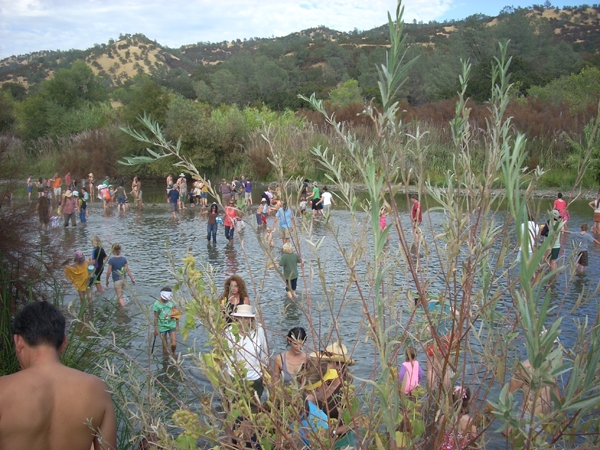
HoesDown2010river
Grad students head abroad to work with farmers
You’ve probably heard it millions of times in your lifetime, but it bears repeating: Not everyone has enough, good food to eat.
To that end, the Horticulture Collaborative Research Support Program at UC Davis builds global partnerships for fruit and vegetable research to improve livelihoods in developing countries.
Through Horticulture CRSP’s Trellis Fund, these students have been matched with organizations in Nepal, Uganda, Rwanda, Kenya, Tanzania, Honduras and Nicaragua to provide their agricultural expertise in assisting the organizations' projects with smallholder farmers.
Besides supporting local farmers in developing countries, the projects will also potentially infect students with an interest in international agricultural issues.
“With the Trellis Fund, our goal is to engage young people in an international experience — a chance to partner with a small organization working with real people with real needs and apply what they know about science,” said Beth Mitcham, UC Cooperative Extension specialist in the Plant Sciences Department at UC Davis and director of Horticulture CRSP. “For a small investment, we’re creating lasting relationships and perhaps changing the career path of a young person.”
Read our full press release for more details, or find out who is going where on our Trellis Fund page.
UC healthcare supports healthier menus and zero waste
Can I introduce the unappetizing topic of hospital food? Hospitals are notorious for not practicing what they preach in their own food service operations. Their food vendors provided fruits and vegetables that were overcooked, over-sugared, over-salted and ready-to-eat. By “leaving the cooking to them,” vendors made cafeterias more profitable by eliminating labor-intensive, freshly prepared meals. Kitchens replaced skilled cooks with untrained staff who rarely needed paring knives except for opening, reheating and disposing of packaging. Fortunately, sustainability goals are helping hospitals (like school cafeterias) undergo menu reform to make more local, fresh options available for their staff, visitors and patients.
Kaiser Permanente, a leader in the reform movement since 2003, has established 50 farmers’ markets at their facilities. A recent survey published in Journal of Agriculture, Food Systems, and Community Development (subscription required) found that 74 percent of patrons surveyed at Kaiser Permanente markets consume more fruits and vegetables as a result of shopping there, and 71 percent indicated that they were eating a greater variety of fruits and vegetables.
Gail Lee, UCSF’s Sustainability Manager, credits UC Office of the President for inspiring each campus and medical center food service operation to achieve their goal of procuring 20 percent sustainable food products by the year 2020. UCSF started weekly farmers’ markets at the Mission Bay campus from April to November and at the Parnassus campus year round. UCSF is working towards achieving zero food waste by 2020, having implemented post customer compost/recycling programs at 100 percent of their food service locations last year.
Procurement practices — yogurts served to patient and visitors are now local and organic — play a major role in transforming menus. As project manager for an EPA-funded project award, Gail is partnering with UC Berkeley to identify systematic methods that will encourage certifiable, green procurement. She launched their green office and green lab certification and produced an entertaining sustainability video that created a buzz at all four SF campuses.I am proud to be joining Gail’s team to help implement the UC goals. UC Davis was recently declared a “cool school,” but UCSF is well on the way to becoming a nationally recognized “cool hospital” and research campus.
This is good news for those of us who prefer fresh fruit salad to canned fruit cocktail, in spite of the fact that fruit cocktail was a UC Berkeley invention. Professor William Cruess was looking for a way to use the small, wasted bits left over after canning fruit. In his defense, I have to remind myself that the alternative for many parts of the nation in that decade was no fruit at all. He saw fruit spoil in the orchards because what was true then is still true today — California produces much more fruit than locals can possibly eat. Let’s not forget to eat our share of the local bounty.



